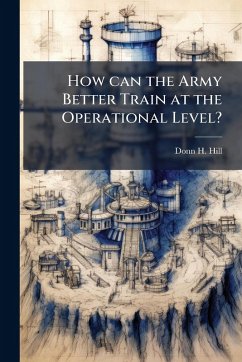
METT-T and the Operational Level Deception Planning Process
Versandkostenfrei!
Versandfertig in über 4 Wochen
15,99 €
inkl. MwSt.
Weitere Ausgaben:

PAYBACK Punkte
8 °P sammeln!
This is a theoretical, historical, and doctrinal analysis of current deception planning procedures in accordance with FM 90-2, Battlefield Deception Operations. Initially, there is a discussion of military theorist's opinions as to the importance of surprise and deception at the operational level of war. Then there is an analysis of the historical use of surprise gained through deception efforts and the utility of METT-T as a deception planning tool at the operational level. The paper demonstrated the dialectic quality of METT-T as well as concluded that the use of METT-T from both a friendly ...
This is a theoretical, historical, and doctrinal analysis of current deception planning procedures in accordance with FM 90-2, Battlefield Deception Operations. Initially, there is a discussion of military theorist's opinions as to the importance of surprise and deception at the operational level of war. Then there is an analysis of the historical use of surprise gained through deception efforts and the utility of METT-T as a deception planning tool at the operational level. The paper demonstrated the dialectic quality of METT-T as well as concluded that the use of METT-T from both a friendly and enemy perspective is an imperative in the development of an operational level deception plan. The paper also concluded that a doctrinal void does exist in the Preliminary Draft of FM 90-2 in regards to the deception planning process. This void is extremely significant in that a process that merely considered the deception operation from a friendly perspective would only fulfill half of the requirement for a comprehensive METT-T analysis. This work has been selected by scholars as being culturally important, and is part of the knowledge base of civilization as we know it. This work was reproduced from the original artifact, and remains as true to the original work as possible. Therefore, you will see the original copyright references, library stamps (as most of these works have been housed in our most important libraries around the world), and other notations in the work. This work is in the public domain in the United States of America, and possibly other nations. Within the United States, you may freely copy and distribute this work, as no entity (individual or corporate) has a copyright on the body of the work. As a reproduction of a historical artifact, this work may contain missing or blurred pages, poor pictures, errant marks, etc. Scholars believe, and we concur, that this work is important enough to be preserved, reproduced, and made generally available to the public. We appreciate your support of the preservation process, and thank you for being an important part of keeping this knowledge alive and relevant.












